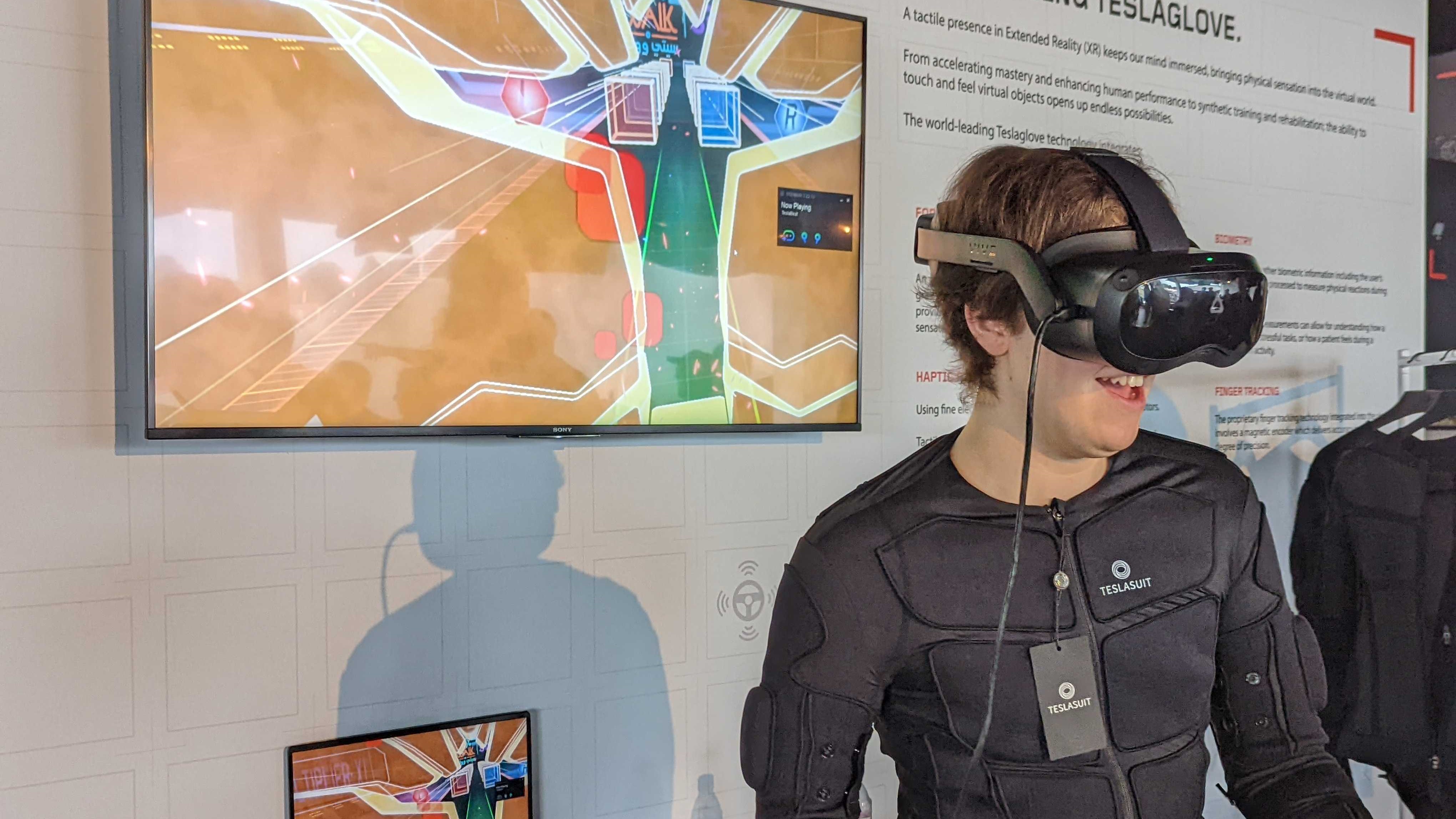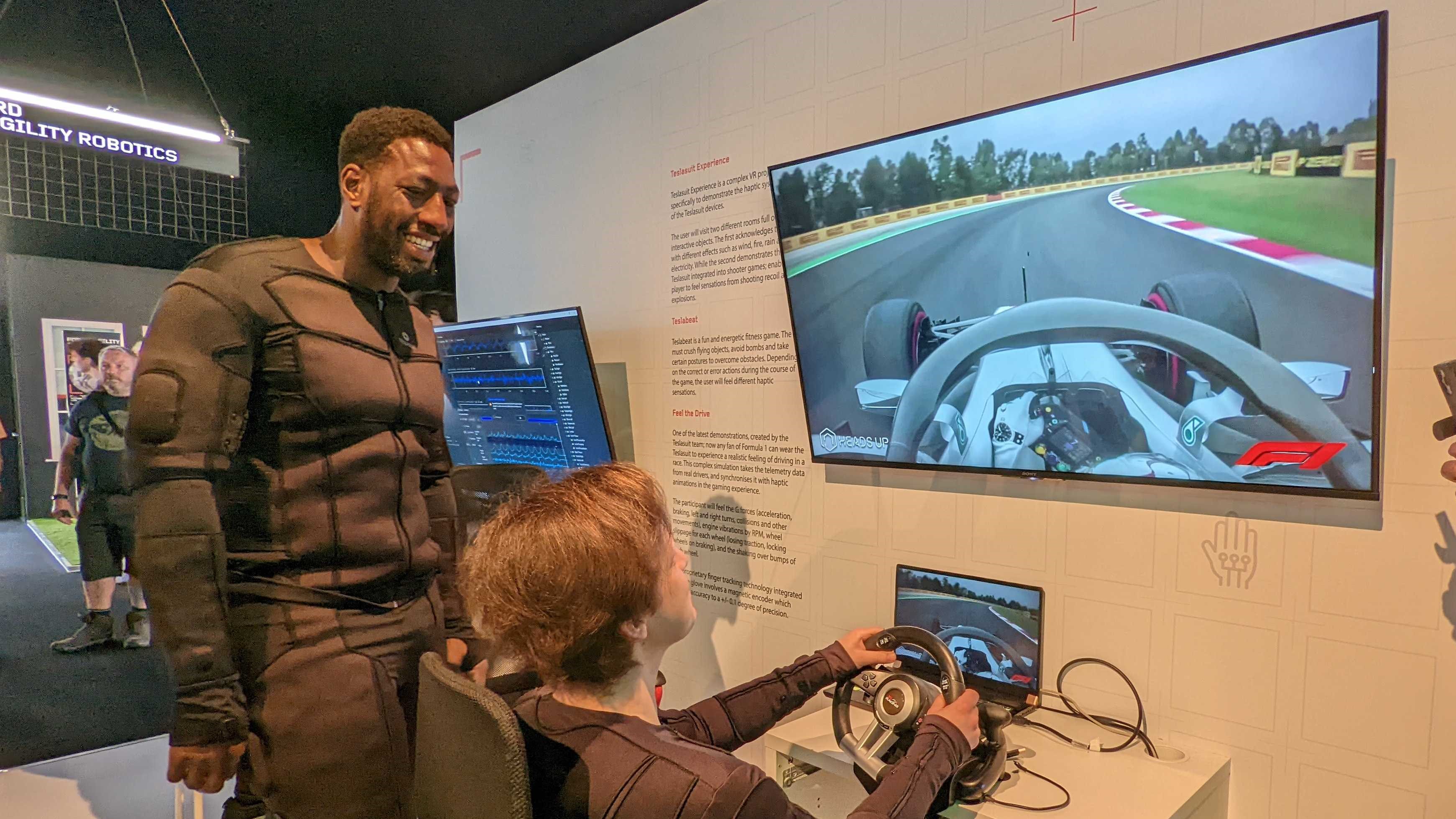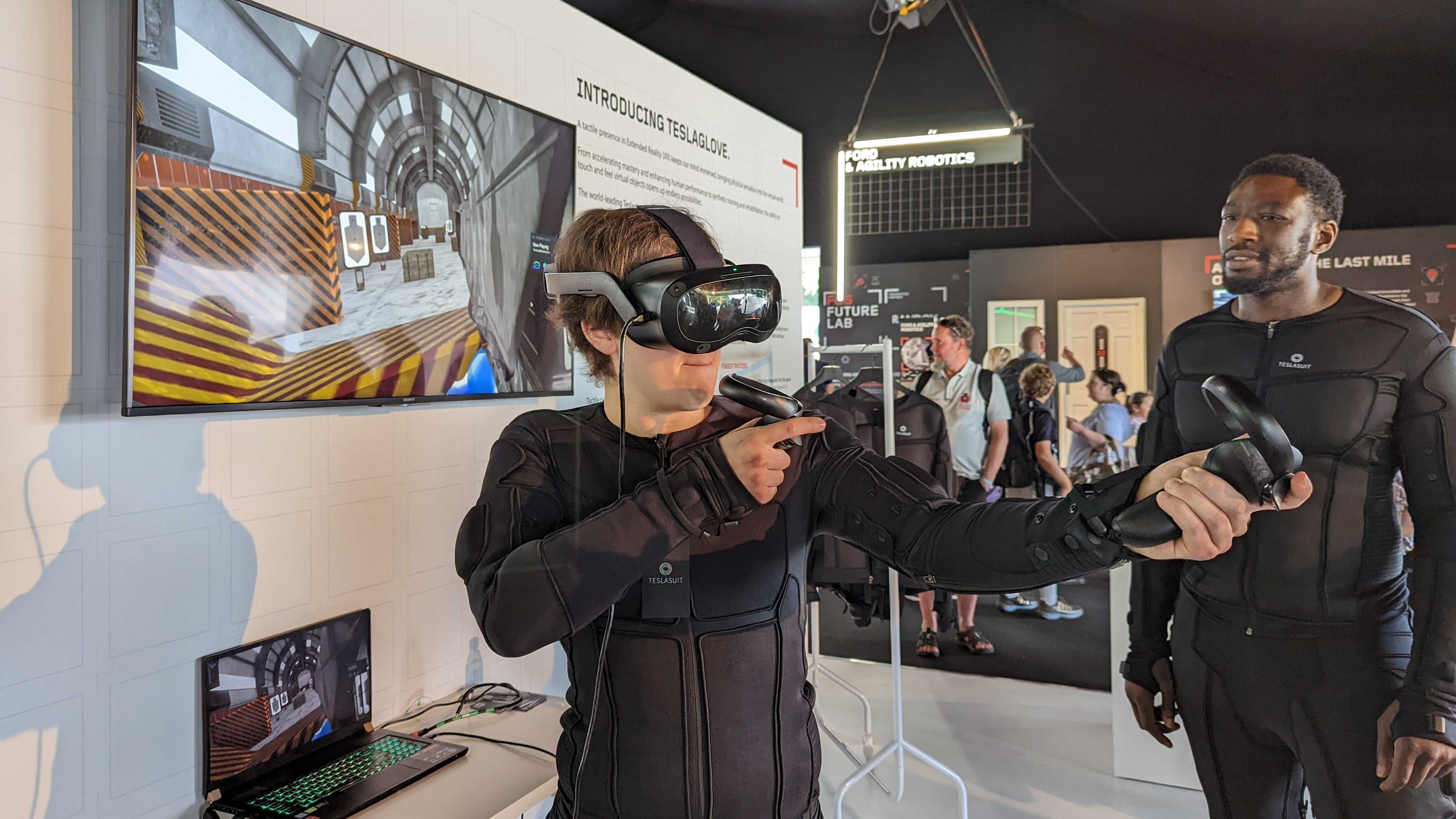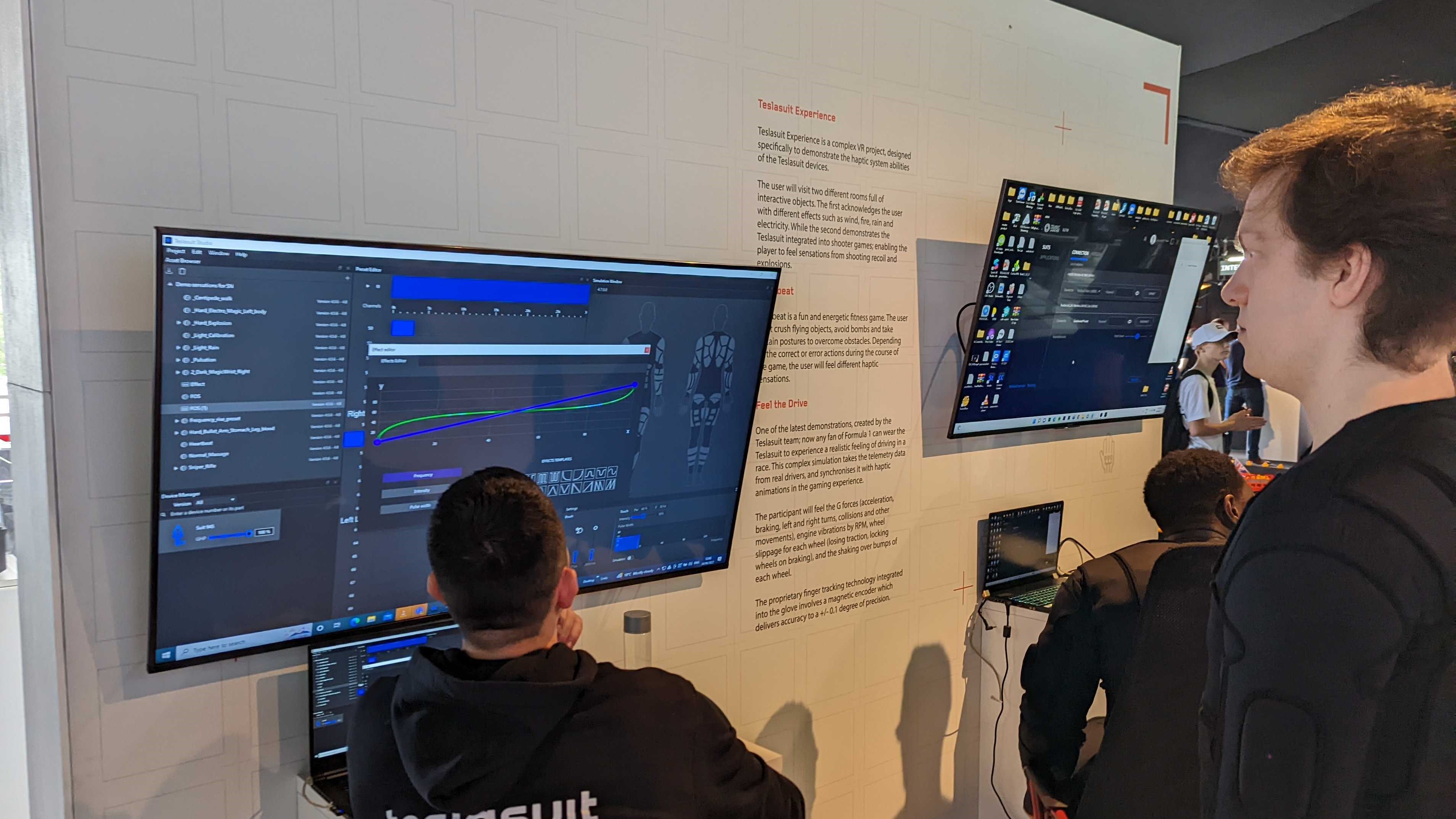This full-body haptic suit has ruined the Oculus Quest 2 for me
My regular VR headset isn't good enough anymore

I finally got to try out a full-body haptic suit in VR, and my plain old Meta Quest 2 (formerly Oculus Quest 2) just isn’t good enough anymore.
At the Future Lab exhibit at the 2022 Goodwood Festival of Speed in the UK, I had the chance to demo a Teslasuit, a full-body haptic suit that could make me feel digital experiences.
It did this by using electrodes spread across 90 different parts of my body. My core, back, legs, and arms all had several electrodes, though none were, at least in the current iteration, against my chest. The electrodes were placed against my bare skin and fired off shocks into my muscles that ranged from 1mA to 60mA, based on user-configurable settings.
By firing signals at different frequencies and intensities these electrodes were used to simulate a range of real-life feelings and sensations based on what was happening to my digital avatar. I could feel the rain falling on my body, a sandstorm whipping past me, and recoil from firearms as I hit targets in a virtual shooting range.
Admittedly the sensations weren’t always perfectly recreated. Unlike actual rain, the simulated stuff had this static, electrical nature but when coupled with VR visuals it was utterly believable.

This was especially true of my favorite and by far the most immersive experience, which turned me into Lewis Hamilton, the seven-time F1 champion. What’s more, for this one I wasn’t even wearing a VR headset, just watching a TV screen.
Using actual data collected from Hamilton’s races the haptic suit I was wearing could mimic the feeling of G force that he experiences while driving around a track at top speeds. Electrical pulses fired into my arms and core, making my muscles feel heavier and I believed my body was actually being thrown around by the acceleration and deceleration caused by a moving racecar.
Get daily insight, inspiration and deals in your inbox
Sign up for breaking news, reviews, opinion, top tech deals, and more.
Even though driving in virtual reality makes me feel dizzy, I’d love to try it with the Teslasuit on. I’m convinced these realistic sensations could keep my motion sickness at bay, though I’ll, unfortunately, have to wait a while longer to test my theory.

That’s because the current device is pretty high-end – it doesn’t just contain haptic feedback but full-body motion capture and biometric systems which add to its cost. Speaking with the team at the exhibit, I learned that what I tested isn’t the sort of suit someone would have just lying around at home, it’s a premium model designed for top-tier athlete training and for patients going through medical rehab.
But while they don’t yet offer something more consumer-friendly, the team’s dream is to make haptic suits with mass-market appeal. That, according to CEO Sergei Nossoff, will just take a bit more time.
The team will also need that time to convince people haptic suits are the next big thing because admittedly they’re pretty daunting.
Even though I knew the suit was calibrated so that it could in no way hurt me, I was terrified at the VR shooting range. The firearms were fine, but the table covered in virtual grenades was like a scene from a VR horror game – I was afraid that they’d virtually blow up in my face as I approached.

However, just like playing paintball in real life after the first hit – or in my case a whiffed throw that saw a grenade explode at my feet – I discovered it hurts way less than you’re expecting it to.
If you have the chance to try out a haptic suit for yourself I’d definitely recommend overcoming any fears you might have and slipping into one. After my experience with the Teslasuit, I’m convinced that it’ll be the next VR revolution and I can’t wait until I have one of these for my own at-home use.
Until then though, I’ll just have to settle with my less immersive Quest 2 headset.
A glutton for punishment, Hamish also tried Teslasuit gloves.

Hamish is a Senior Staff Writer for TechRadar and you’ll see his name appearing on articles across nearly every topic on the site from smart home deals to speaker reviews to graphics card news and everything in between. He uses his broad range of knowledge to help explain the latest gadgets and if they’re a must-buy or a fad fueled by hype. Though his specialty is writing about everything going on in the world of virtual reality and augmented reality.